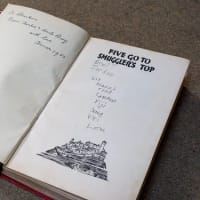本篇英国paper代写-Personal Space and Eye Contact讲了在日常生活中,个人空间是无处不在的常见现象。例如,人们通常选择图书馆,公共汽车和餐厅中没有人的单人座位或座位。人们总是保持一定距离。人们使用一定距离来保护自己的部分,保护自身的安全。本篇paper代写由51due代写平台整理,供大家参考阅读。
In the daily life, personal space is the very common phenomenon which can be found everywhere. For example, people generally choose the single seat or the seat where no one around in the library, bus and restaurant. People always keep the certain distance away from each other. The certain distance is used by people to protect their own parts and protect their self-security. Similarly, the group also keeps the certain space distance from other groups. The individuals of group also reciprocally maintain their relatively fixed parts among members of group. This kind of phenomenon is very common particular in relative the spacious square and other public places. A lot of times human beings communicate with others by the use of space. In the meanwhile, this kind of space behavior is also a key condition to impact people’s feelings to others. Psychologists are more concerned about the relationship between human beings and space. The personal space is one of the basic problems to discuss. Throughout the psychology field, personal trade has become an interdisciplinary subject of the interpersonal relation psychology, environmental psychology, social psychology and other subjects. Its research covers lots of aspects such as clinical psychology, personality psychology, etc.
Sommer (1969) defined the notion of personal space. The personal space means the invisible area that surrounds a person’s body which others are not allowed invading or intruding (Sommer, 1969). Hayduk (1983) defined personal space that personal space as the area which individuals maintain around their bodies but no one could intrude their areas, otherwise, the intruded behavior would make the individuals discomfort (Hayduk, 1983). In conclusion, the theory of personal space is the psychology research range. People regard their physical space where surrounds them as one of their parts. The region named person space. There are many factors can affect the personal space, including personal factor, cultural background factor, environmental factor and so forth.
Eye contact is one of the common non-verbal communications in interpersonal communication. The significance of eye contact in human communication has drawn a great number of psychologists to pay attention it and study its effect in the personal space. The eye contact produces a great influence on enlarging or reducing the personal space violations. Along with the proximity increasing, the effect of eye contact will reduce gradually. Moreover, the increasing proximity will make eye contact become uncomfortable in a way or will suggest people to avoid to do that. Therefore, people consciously reduce times to gaze each other directly when their proximity increases (Argyle & Dean, 1965). For instance, male subjects would show less contact than females. To compare with male eye contact or face-to-face interaction, Argyle also explored that females maintain loner glances and they have a trend to take part in the mutual eye contact accordingly. Buchanan, Goldman and Juhnke (1977) showed that males would violate their personal space and divert their gaze when others (males or females) make eye contact with them. Female also would divert their gaze and violate their personal space when males make eye contact with them. Males violate their personal space when the others (males and females) make directing eye contact with them. However, females violate their personal space or divert their gaze on the condition that males make eye contact with them (Buchanan, Goldman & Juhnke, 1977).
The crowdedness is in of the important subject of environmental psychology researches. The crowdedness refers to a kind of unpleasant, depressive and negative emotion, which produces on the condition that people suffer restriction (Li, 2010). The western psychologists Clements and Carl (1979) think crowdedness can cause disease and affect individual or the whole social life. The crowded city generally makes people think unhealthy outward appearance and violent behaviors ((Clements & Carl, 1979). Crowdedness is the uncomfortable psychological state which relates to the demand which more than practical space. Moreover, it also relates to the condition where people stayed at that time. Although sometimes people own enough space, they would feel crowded when they want to stay along. Loo (1979) explored the relations between the crowdedness and personal space which based on the sample of 5-year-old boys. Loo predicted that personal space caused avoidance behaviors but not related to the self-reported impact or perceptions. Latter, the modest findings were different from his prediction. The findings of Loo and Kennelly (1978) were contrast sharply with his prior findings. In 1978, Loo and Kennelly chose the 10-year-old boys who owned larger personal space and lager spatial spaces. They developed stronger reactions to crowded conditions. For all their responses were similar to boys who had smaller personal spaces. Therefore, they found that children had similar negative reactions and uncomfortable feelings to crowded conditions no matter with larger or smaller personal spaces. Hence, Loo’s findings could be regard as the evidences to revel the personal spaces which existed close relations with crowded conditions.
There were a lot of findings on personal space in the past. However, the scientists and psychologists became concentrating on the relations between eye contact and personal space. Eye contact as a variable can lead people to violate their personal space or not. Making eye contact directly may cause people feel uncomfortable so that increase their personal space. The effect of eye contact on personal space existed difference between males and females. The studies of Exline (1963) reported that people increase their personal space when make eye contact with others. The important reason is that make eye contact with strangers which make them uncomfortable. Moreover, the frequency of eye contact is not adequate between males and females. The times of latter are greater than the latter (Exline, 1963).
The hypothesis posited that participants will desire a lager or more demand for personal space on the condition two (no eye contact) than the condition one (eye contact). In the condition one, participant will move toward to a confederate who maintains eye contact with participants. The participant will stop once they felt uncomfortable. In the condition 2, the participants will also move toward a confederate, however, participants cannot have eye contact with a confederate but just see the back of confederate. Likewise, the participants will stop when they felt unpleasant. The participant’s size of personal space in the experiment is equal to the distance (measuring in centimeters) leaving by the participant.
Method
Participants
The sample consisted of two coditions. The condition one and condition two were all made up of 149 participants which was the sum total of students. The participants of the condition one (M=62.54, SD=44.93) and condition two (M=35.9, SD=31.04) all included 101 females aged between 17 to 23 and males 48 aged 17 to 21 years. The participants nationnatily was listed as follows: China (100), Hong Kong, China (22), Japan (4), Korea (5), Malaysia (4), Nepal (2), Singapore (3), Taiwan, China (3), Thailand (1), United Arab Emirates (2), Vietnam (3). The participants were students who participate in the experiment of their own accord without any payment. The experiment also signed informed consent before the experiment. The assistant in the experiment is in charge of asking the participants basic information about age, gender, nationality. The confederates are responsible to take record the basic information and measure the distance between confederates and participants. The confederates in the experiment were all males and the assistants were females expect in the classroom BS1.
|Table 1
Details of Assistants, Confederates, and Rooms for All Experiments.
ClassRoleAgeGenderNationality
BSf1Assistant 1 (Recorder)18MChina
Assistant 2 (Measurer)18MHong Kong
Confederate19MChina
BSf2Assistant 1 (Recorder)18FChina
Assistant 2 (Measurer)21FKorea
Confederate20MEcuador
BSf3Assistant 1 (Recorder)19FHong Kong
Assistant 2 (Measurer)18FChina
Confederate20MBotswana
BSf4Assistant 1 (Recorder)19FChina
Assistant 2 (Measurer)19F Singapore
Confederate19MChina
BSf5Assistant 1 (Recorder)19FChina
Assistant 2 (Measurer)19FHong Kong
Confederate20MChina
BSf6Assistant 1 (Recorder)18FChina
Assistant 2 (Measurer)18FMalaysia
Confederate18MMalaysia
BSf7Assistant 1 (Recorder)18FVietnam
Assistant 2 (Measurer)20MChina
Confederate19MChina
BSf8Assistant 1 (Recorder)19FChina
Assistant 2 (Measurer)19FHong Kong
Confederate19MChina
BSf9Assistant 1 (Recorder)18FSingapore
Assistant 2 (Measurer)25FSaudi Arabia
Confederate19MHong Kong
|Table 2
Details of Rooms, Dates and Time for All Experiment.
ClassRooms usedDay of experimentTime
BSf1Level 7 Lunch room and R 7.3Tuesday4-5pm
BSf2Level 7 Lunch room and R 7.3Tuesday9 - 10am
BSf3Level 7 Lunch room and R 7.3Monday4 - 5pm
BSf4Level 3 staff room and R 3.5Monday2 - 3pm
BSf5Level 7 Lunch room and R 7.3Thursday11 - 12pm
BSf6Level 3 staff room and R 3.5Monday2 -3 pm
BSf7Rm 3.5 and corridorMonday9-10am
BSf8Level 3.9 staff room and 3.5Wednesday 9 -10am
BSf9Level 3.9 staff room and 3.5Thursday11-12pm
Materials
The experiment needed materials to assist with the research which. Assistant used tapeline to measure the distance where participants stand away confederate. Assistant used masking paper tape to sign the specific location where participants stop. Recorder used the recording sheet to keep a record about participants’ basic information about nationality, age, gender and the distance from participants to confederate in the experiment. Assistant prepared an envelope consisting of numbers which are used to determine participants’ order.
Procedure
For all the experiment was tested in different classes at different times in different days, the whole procedure of the experiment was all the same for all classes. In order to gain and confirm the consent by the participants who were invited, they should sign permission forms prior to the experiment. Consequently, the supervisor would tell the experiment’s purpose and would explain the completed procedure of the experiment. Moreover, the supervisor would inform the details of the experiment, and including the data, location, method and so forth. In the experiment, the supervisor chose three people who were in charge of different works during the experiment. The first one called assistant 1 who measured the distance from confederate to volunteer. The second one called assistant 2 who took charge for taking record such as participant’s age, nationality and distance. The third one was the confederate. The supervisor prepared an envelope containing different numbers. The participants were asked for pick out optionally one number from the envelope, and the number would decide their specific order in the experiment.
The experiment started when all the participants stood outside of the room in order to assure the objective and accuracy of the experiment consequence. Firstly, the assistant 1 called the number which participants has pick out previously, and the corresponding participant would get into the room according to the number. Other participants formed a line in order and waited for enter the room. First of all, the assistant would ask for participant’s basic information about sex, age and nationality and then recorder would record these statistics accordingly in the room. The participants would be guide and instruct about the location where they should stand. Next, in the condition one, participants would walk to confederates and participants would maintain eye contact. Participants would decide where and when to stop on the condition that they felt the personal space was compromised. The assistant 1 would measure the distance where the participant left from the confederate and then the assistant 2 recorded the distance.
Finally, the participants went out of the room and waited outside. The condition 1 was finished when all participants accomplish the experiment. The second condition would begin after the finish of the condition one. The procedure of condition 2 likes the condition 1. The only difference between condition 1 and condition 2 was that the participants had no eye contact with confederate but only faced the back of confederate.
Results
The participants of two conditions were measured their personal space in the experiment. The t-test = 7.330989, which was higher than the critical one tailed test = 1.655215. That meant the result was not accident and the result was important. To compare with the condition one, no eye-contact of the condition two (M=35.9, SD=31.04) was lower than eye contact (M=62.54, SD=44.39). It tests the hypothesis that the value of mean with no eye-contact was lower than the value of mean with eye contact. (See Table 3).
|Table 3
The Experiment Data of Condition One (eye-contact) and Condition Two (no eye- contact)
AgeGenderNationalityDistance with eye-contact
Condition one (cm)Distance without eye-contact
Condition two (cm)difference
21FKorea705812
18FChina18824164
18FChina5262-10
18FChina1376473
17FChina6885-17
18FChina503020
20MChina795227
21MChina723834
18FMalaysia674819
19MChina933-24
19MChina702743
19FChina604020
18MChina18612
18FChina955441
19FHong Kong61.54.5
18FChina20020
19FChina43637
20FKorea40931
17FChina792752
18FMalaysia10100
19FChina692148
18FKorea381226
18FVietnam1587
18FChina946331
18MChina18108
19MChina18414
18FChina38929
19FChina1306070
21MChina126-25
19FChina251114
18FChina13112
19FSingapore3638-2
19FChina411922
18FChina1184573
18FChina482028
18FChina583622
22FSingapore846915
18MHong Kong642440
18MChina57948
19MHong Kong505
18FChina39327
18FChina1105654
19MHong Kong11011
18FChina332310
17FVietnam3743-6
20FJapan634617
19FTaiwan1505298
18FChina2663-37
18MChina871671
18MHong Kong15105
18FUnited Arab Emirates54540
19MTaiwan1286068
20MChina134168-34
20MVietnam933063
19FHong Kong78870
17FMalaysia13103
18MChina312011
18FChina702644
22FChina1083573
18FChina14134107
18FChina1011883
18FChina31229
18FChina790.578.5
19FHong Kong642638
19FChina26.554-27.5
18FChina4748.5-1.5
18MChina21066.5143.5
18MChina833053
18FChina24.550-25.5
20MChina3142-11
21FNepal1034756
19FChina30264
19FChina5667.5-11.5
19FHong Kong69618
17FChina604911
18MHong Kong30921
18MHong Kong20514.5190.5
18FChina10352.550.5
17MChina060-60
23FNepal145190-45
18FChina1154273
20FChina963363
19FChina89584
21MChina6498-34
18MChina10010
17FChina84124.5-40.5
18FChina36.5630.5
19FChina463313
18MChina33294
20MHong Kong339.523.5
19FSingapore2535-10
20MJapan644024
18MHong Kong4.504.5
19FThailand684325
18MChina72102-30
19FHong Kong1858.5-40.5
17FChina77.56512.5
17FChina532528
19FChina58.51741.5
18FChina1032875
20FKorea5657-1
19FChina34331
18FChina38317
17FHong Kong9849.548.5
18MChina6139-133
19FHong Kong1578149
20MKorea645014
19FChina1126106
18FChina1429133
18FChina533518
20MChina13013
17FChina1076542
18FChina1235667
18MChina1476780
18FChina462125
19MHong Kong14421123
17MHong Kong4187-46
19MHong Kong623032
20MHong Kong2332.5-9.5
17FChina743
18MChina13013
18FChina202.552150.5
19FChina42.52517.5
17MHong Kong3244-12
17FChina23149
18FChina662739
18FChina5976-17
19FTaiwan1611.54.5
18FChina106.52581.5
19MChina6.506.5
18FChina404
21FChina5014.535.5
18MMalaysia621.5-15.5
19FChina1279136
19FChina662145
17FChina471532
18FChina1177146
19FUnited Arab Emirates6784-17
20MJapan20416
19FJapan835033
17FHong Kong783345
18MChina803446
21FChina453312
20MHong Kong20020
20MChina752
20MChina55946
18FChina663630
18FChina31922
20FChina3859-21
Discussion
In the results of experiment, participants have a trend to avoid eye contact directly with confederate. Moreover, different gender of participant behaved differently. The females maintain eye-contact longer than the males in the experiment the both conditions. When the participants made eye contact with confederate, they felt uncomfortable and they stop walking to the confederate in order to maintain their own personal space. The mean of condition one (with eye-contact) is 62.54 and the mean if condition two (with no eye-contact) is 35.9, the participants asked for greater personal space on the condition one than the condition two. That means participants in the experiment require more personal space or greater spatial distance on the condition that they make eye-contact than with no eye contact. The hypothesis was correct.
In the experiment, the study took some variables such as distance, gender, nationality and age in consideration to ensure the experiment to achieve the desired results. In order to define more complexed and specific relationship between eye contact and persona space, the experiment ought to consist of more variables. In other words, some extraneous variables can play important roles to impact the experiment which beyond the previous expectation. In the sample of the experiment, there were a great amount of participants voluntarily joined the experiment to help the study to prove the hypothesis and to explore the relations between eye contact and personal space.
Although the experiment considered many variables which may affect the objective and accuracy of the results, it was impossible to eliminate all interference factors. The confederates in the experiment were males, which cannot exclude the effect of gender when female participants made eye contact with male confederates. Therefore, the balanced proportion of male and female may appear different results.
As a result, the experiment could become better on the condition that changed the construction of participants and put forward more hypotheses. Firstly, the male and female ratio was not very reasonable. The amount of female was far beyond than the amount of male. It was better to balance the proportion of genders. Secondly, the participants were all students. That meant the age structure was quite young. The experiment ought to consider widening the age groups. Finally, there were many extraneous factors that could impact the results of experiment, and including crowdedness, density, facial expression, height and so forth.
The experiment came up with new areas of personal space and eye contact, which provided references to the further study. The further study would focus on some unreasonable places so as to improve them. Eye contact is one of the parts of facial expressions. The further study would use more variables to define the facial expression whether influence people’s personal space such as smiling, anger, sadness, and solemn facial expressions. If confederate smiles to the participant, the participants would maintain eye-contact with confederate because confederate’s kindness and friendly release participant’s uncomfortable. These can affect the length of eye contact and can affect the personal space.
Reference
Argyle, M., & Dean, J. (1965). Eye-contact, distance and affiliation. Sociometry, 28(28), 289-304.
Clements, Carl B. (1979). Crowded prisons: a review of psychological and environmental effects. Law & Human Behavior(3), 217-225.
Dosey, M. A., & Meisels, M. (1969). Personal space and self-protection. Journal of Personality & Social Psychology, 11(2), 93-7.
Exline, R. V. (1959). Exploration in the process of person perception: visual interaction in relation to competition. Urbana ILL University of Illinois Agricultural Experiment Station, 31(1), 1-20.
Li, Y. (2010). Environmental psychological feelings and personal space. Value Engineering. 4 (4), 123-125.
Hayduk, L. A. (1983). Personal space: where we now stand. Psychological Bulletin, 94(2), 293-335.
Loo, C., & Kennelly, D. (1979). Social density: its effects on behaviors and perceptions of preschoolers. Environmental Psychology & Nonverbal Behavior, 3(3), 131-146.
要想成绩好,英国论文得写好,51due代写平台为你提供英国留学资讯,专业辅导,还为你提供专业英国essay代写,paper代写,report代写,需要找论文代写的话快来联系我们51due吧。—Ace
In the daily life, personal space is the very common phenomenon which can be found everywhere. For example, people generally choose the single seat or the seat where no one around in the library, bus and restaurant. People always keep the certain distance away from each other. The certain distance is used by people to protect their own parts and protect their self-security. Similarly, the group also keeps the certain space distance from other groups. The individuals of group also reciprocally maintain their relatively fixed parts among members of group. This kind of phenomenon is very common particular in relative the spacious square and other public places. A lot of times human beings communicate with others by the use of space. In the meanwhile, this kind of space behavior is also a key condition to impact people’s feelings to others. Psychologists are more concerned about the relationship between human beings and space. The personal space is one of the basic problems to discuss. Throughout the psychology field, personal trade has become an interdisciplinary subject of the interpersonal relation psychology, environmental psychology, social psychology and other subjects. Its research covers lots of aspects such as clinical psychology, personality psychology, etc.
Sommer (1969) defined the notion of personal space. The personal space means the invisible area that surrounds a person’s body which others are not allowed invading or intruding (Sommer, 1969). Hayduk (1983) defined personal space that personal space as the area which individuals maintain around their bodies but no one could intrude their areas, otherwise, the intruded behavior would make the individuals discomfort (Hayduk, 1983). In conclusion, the theory of personal space is the psychology research range. People regard their physical space where surrounds them as one of their parts. The region named person space. There are many factors can affect the personal space, including personal factor, cultural background factor, environmental factor and so forth.
Eye contact is one of the common non-verbal communications in interpersonal communication. The significance of eye contact in human communication has drawn a great number of psychologists to pay attention it and study its effect in the personal space. The eye contact produces a great influence on enlarging or reducing the personal space violations. Along with the proximity increasing, the effect of eye contact will reduce gradually. Moreover, the increasing proximity will make eye contact become uncomfortable in a way or will suggest people to avoid to do that. Therefore, people consciously reduce times to gaze each other directly when their proximity increases (Argyle & Dean, 1965). For instance, male subjects would show less contact than females. To compare with male eye contact or face-to-face interaction, Argyle also explored that females maintain loner glances and they have a trend to take part in the mutual eye contact accordingly. Buchanan, Goldman and Juhnke (1977) showed that males would violate their personal space and divert their gaze when others (males or females) make eye contact with them. Female also would divert their gaze and violate their personal space when males make eye contact with them. Males violate their personal space when the others (males and females) make directing eye contact with them. However, females violate their personal space or divert their gaze on the condition that males make eye contact with them (Buchanan, Goldman & Juhnke, 1977).
The crowdedness is in of the important subject of environmental psychology researches. The crowdedness refers to a kind of unpleasant, depressive and negative emotion, which produces on the condition that people suffer restriction (Li, 2010). The western psychologists Clements and Carl (1979) think crowdedness can cause disease and affect individual or the whole social life. The crowded city generally makes people think unhealthy outward appearance and violent behaviors ((Clements & Carl, 1979). Crowdedness is the uncomfortable psychological state which relates to the demand which more than practical space. Moreover, it also relates to the condition where people stayed at that time. Although sometimes people own enough space, they would feel crowded when they want to stay along. Loo (1979) explored the relations between the crowdedness and personal space which based on the sample of 5-year-old boys. Loo predicted that personal space caused avoidance behaviors but not related to the self-reported impact or perceptions. Latter, the modest findings were different from his prediction. The findings of Loo and Kennelly (1978) were contrast sharply with his prior findings. In 1978, Loo and Kennelly chose the 10-year-old boys who owned larger personal space and lager spatial spaces. They developed stronger reactions to crowded conditions. For all their responses were similar to boys who had smaller personal spaces. Therefore, they found that children had similar negative reactions and uncomfortable feelings to crowded conditions no matter with larger or smaller personal spaces. Hence, Loo’s findings could be regard as the evidences to revel the personal spaces which existed close relations with crowded conditions.
There were a lot of findings on personal space in the past. However, the scientists and psychologists became concentrating on the relations between eye contact and personal space. Eye contact as a variable can lead people to violate their personal space or not. Making eye contact directly may cause people feel uncomfortable so that increase their personal space. The effect of eye contact on personal space existed difference between males and females. The studies of Exline (1963) reported that people increase their personal space when make eye contact with others. The important reason is that make eye contact with strangers which make them uncomfortable. Moreover, the frequency of eye contact is not adequate between males and females. The times of latter are greater than the latter (Exline, 1963).
The hypothesis posited that participants will desire a lager or more demand for personal space on the condition two (no eye contact) than the condition one (eye contact). In the condition one, participant will move toward to a confederate who maintains eye contact with participants. The participant will stop once they felt uncomfortable. In the condition 2, the participants will also move toward a confederate, however, participants cannot have eye contact with a confederate but just see the back of confederate. Likewise, the participants will stop when they felt unpleasant. The participant’s size of personal space in the experiment is equal to the distance (measuring in centimeters) leaving by the participant.
Method
Participants
The sample consisted of two coditions. The condition one and condition two were all made up of 149 participants which was the sum total of students. The participants of the condition one (M=62.54, SD=44.93) and condition two (M=35.9, SD=31.04) all included 101 females aged between 17 to 23 and males 48 aged 17 to 21 years. The participants nationnatily was listed as follows: China (100), Hong Kong, China (22), Japan (4), Korea (5), Malaysia (4), Nepal (2), Singapore (3), Taiwan, China (3), Thailand (1), United Arab Emirates (2), Vietnam (3). The participants were students who participate in the experiment of their own accord without any payment. The experiment also signed informed consent before the experiment. The assistant in the experiment is in charge of asking the participants basic information about age, gender, nationality. The confederates are responsible to take record the basic information and measure the distance between confederates and participants. The confederates in the experiment were all males and the assistants were females expect in the classroom BS1.
|Table 1
Details of Assistants, Confederates, and Rooms for All Experiments.
ClassRoleAgeGenderNationality
BSf1Assistant 1 (Recorder)18MChina
Assistant 2 (Measurer)18MHong Kong
Confederate19MChina
BSf2Assistant 1 (Recorder)18FChina
Assistant 2 (Measurer)21FKorea
Confederate20MEcuador
BSf3Assistant 1 (Recorder)19FHong Kong
Assistant 2 (Measurer)18FChina
Confederate20MBotswana
BSf4Assistant 1 (Recorder)19FChina
Assistant 2 (Measurer)19F Singapore
Confederate19MChina
BSf5Assistant 1 (Recorder)19FChina
Assistant 2 (Measurer)19FHong Kong
Confederate20MChina
BSf6Assistant 1 (Recorder)18FChina
Assistant 2 (Measurer)18FMalaysia
Confederate18MMalaysia
BSf7Assistant 1 (Recorder)18FVietnam
Assistant 2 (Measurer)20MChina
Confederate19MChina
BSf8Assistant 1 (Recorder)19FChina
Assistant 2 (Measurer)19FHong Kong
Confederate19MChina
BSf9Assistant 1 (Recorder)18FSingapore
Assistant 2 (Measurer)25FSaudi Arabia
Confederate19MHong Kong
|Table 2
Details of Rooms, Dates and Time for All Experiment.
ClassRooms usedDay of experimentTime
BSf1Level 7 Lunch room and R 7.3Tuesday4-5pm
BSf2Level 7 Lunch room and R 7.3Tuesday9 - 10am
BSf3Level 7 Lunch room and R 7.3Monday4 - 5pm
BSf4Level 3 staff room and R 3.5Monday2 - 3pm
BSf5Level 7 Lunch room and R 7.3Thursday11 - 12pm
BSf6Level 3 staff room and R 3.5Monday2 -3 pm
BSf7Rm 3.5 and corridorMonday9-10am
BSf8Level 3.9 staff room and 3.5Wednesday 9 -10am
BSf9Level 3.9 staff room and 3.5Thursday11-12pm
Materials
The experiment needed materials to assist with the research which. Assistant used tapeline to measure the distance where participants stand away confederate. Assistant used masking paper tape to sign the specific location where participants stop. Recorder used the recording sheet to keep a record about participants’ basic information about nationality, age, gender and the distance from participants to confederate in the experiment. Assistant prepared an envelope consisting of numbers which are used to determine participants’ order.
Procedure
For all the experiment was tested in different classes at different times in different days, the whole procedure of the experiment was all the same for all classes. In order to gain and confirm the consent by the participants who were invited, they should sign permission forms prior to the experiment. Consequently, the supervisor would tell the experiment’s purpose and would explain the completed procedure of the experiment. Moreover, the supervisor would inform the details of the experiment, and including the data, location, method and so forth. In the experiment, the supervisor chose three people who were in charge of different works during the experiment. The first one called assistant 1 who measured the distance from confederate to volunteer. The second one called assistant 2 who took charge for taking record such as participant’s age, nationality and distance. The third one was the confederate. The supervisor prepared an envelope containing different numbers. The participants were asked for pick out optionally one number from the envelope, and the number would decide their specific order in the experiment.
The experiment started when all the participants stood outside of the room in order to assure the objective and accuracy of the experiment consequence. Firstly, the assistant 1 called the number which participants has pick out previously, and the corresponding participant would get into the room according to the number. Other participants formed a line in order and waited for enter the room. First of all, the assistant would ask for participant’s basic information about sex, age and nationality and then recorder would record these statistics accordingly in the room. The participants would be guide and instruct about the location where they should stand. Next, in the condition one, participants would walk to confederates and participants would maintain eye contact. Participants would decide where and when to stop on the condition that they felt the personal space was compromised. The assistant 1 would measure the distance where the participant left from the confederate and then the assistant 2 recorded the distance.
Finally, the participants went out of the room and waited outside. The condition 1 was finished when all participants accomplish the experiment. The second condition would begin after the finish of the condition one. The procedure of condition 2 likes the condition 1. The only difference between condition 1 and condition 2 was that the participants had no eye contact with confederate but only faced the back of confederate.
Results
The participants of two conditions were measured their personal space in the experiment. The t-test = 7.330989, which was higher than the critical one tailed test = 1.655215. That meant the result was not accident and the result was important. To compare with the condition one, no eye-contact of the condition two (M=35.9, SD=31.04) was lower than eye contact (M=62.54, SD=44.39). It tests the hypothesis that the value of mean with no eye-contact was lower than the value of mean with eye contact. (See Table 3).
|Table 3
The Experiment Data of Condition One (eye-contact) and Condition Two (no eye- contact)
AgeGenderNationalityDistance with eye-contact
Condition one (cm)Distance without eye-contact
Condition two (cm)difference
21FKorea705812
18FChina18824164
18FChina5262-10
18FChina1376473
17FChina6885-17
18FChina503020
20MChina795227
21MChina723834
18FMalaysia674819
19MChina933-24
19MChina702743
19FChina604020
18MChina18612
18FChina955441
19FHong Kong61.54.5
18FChina20020
19FChina43637
20FKorea40931
17FChina792752
18FMalaysia10100
19FChina692148
18FKorea381226
18FVietnam1587
18FChina946331
18MChina18108
19MChina18414
18FChina38929
19FChina1306070
21MChina126-25
19FChina251114
18FChina13112
19FSingapore3638-2
19FChina411922
18FChina1184573
18FChina482028
18FChina583622
22FSingapore846915
18MHong Kong642440
18MChina57948
19MHong Kong505
18FChina39327
18FChina1105654
19MHong Kong11011
18FChina332310
17FVietnam3743-6
20FJapan634617
19FTaiwan1505298
18FChina2663-37
18MChina871671
18MHong Kong15105
18FUnited Arab Emirates54540
19MTaiwan1286068
20MChina134168-34
20MVietnam933063
19FHong Kong78870
17FMalaysia13103
18MChina312011
18FChina702644
22FChina1083573
18FChina14134107
18FChina1011883
18FChina31229
18FChina790.578.5
19FHong Kong642638
19FChina26.554-27.5
18FChina4748.5-1.5
18MChina21066.5143.5
18MChina833053
18FChina24.550-25.5
20MChina3142-11
21FNepal1034756
19FChina30264
19FChina5667.5-11.5
19FHong Kong69618
17FChina604911
18MHong Kong30921
18MHong Kong20514.5190.5
18FChina10352.550.5
17MChina060-60
23FNepal145190-45
18FChina1154273
20FChina963363
19FChina89584
21MChina6498-34
18MChina10010
17FChina84124.5-40.5
18FChina36.5630.5
19FChina463313
18MChina33294
20MHong Kong339.523.5
19FSingapore2535-10
20MJapan644024
18MHong Kong4.504.5
19FThailand684325
18MChina72102-30
19FHong Kong1858.5-40.5
17FChina77.56512.5
17FChina532528
19FChina58.51741.5
18FChina1032875
20FKorea5657-1
19FChina34331
18FChina38317
17FHong Kong9849.548.5
18MChina6139-133
19FHong Kong1578149
20MKorea645014
19FChina1126106
18FChina1429133
18FChina533518
20MChina13013
17FChina1076542
18FChina1235667
18MChina1476780
18FChina462125
19MHong Kong14421123
17MHong Kong4187-46
19MHong Kong623032
20MHong Kong2332.5-9.5
17FChina743
18MChina13013
18FChina202.552150.5
19FChina42.52517.5
17MHong Kong3244-12
17FChina23149
18FChina662739
18FChina5976-17
19FTaiwan1611.54.5
18FChina106.52581.5
19MChina6.506.5
18FChina404
21FChina5014.535.5
18MMalaysia621.5-15.5
19FChina1279136
19FChina662145
17FChina471532
18FChina1177146
19FUnited Arab Emirates6784-17
20MJapan20416
19FJapan835033
17FHong Kong783345
18MChina803446
21FChina453312
20MHong Kong20020
20MChina752
20MChina55946
18FChina663630
18FChina31922
20FChina3859-21
Discussion
In the results of experiment, participants have a trend to avoid eye contact directly with confederate. Moreover, different gender of participant behaved differently. The females maintain eye-contact longer than the males in the experiment the both conditions. When the participants made eye contact with confederate, they felt uncomfortable and they stop walking to the confederate in order to maintain their own personal space. The mean of condition one (with eye-contact) is 62.54 and the mean if condition two (with no eye-contact) is 35.9, the participants asked for greater personal space on the condition one than the condition two. That means participants in the experiment require more personal space or greater spatial distance on the condition that they make eye-contact than with no eye contact. The hypothesis was correct.
In the experiment, the study took some variables such as distance, gender, nationality and age in consideration to ensure the experiment to achieve the desired results. In order to define more complexed and specific relationship between eye contact and persona space, the experiment ought to consist of more variables. In other words, some extraneous variables can play important roles to impact the experiment which beyond the previous expectation. In the sample of the experiment, there were a great amount of participants voluntarily joined the experiment to help the study to prove the hypothesis and to explore the relations between eye contact and personal space.
Although the experiment considered many variables which may affect the objective and accuracy of the results, it was impossible to eliminate all interference factors. The confederates in the experiment were males, which cannot exclude the effect of gender when female participants made eye contact with male confederates. Therefore, the balanced proportion of male and female may appear different results.
As a result, the experiment could become better on the condition that changed the construction of participants and put forward more hypotheses. Firstly, the male and female ratio was not very reasonable. The amount of female was far beyond than the amount of male. It was better to balance the proportion of genders. Secondly, the participants were all students. That meant the age structure was quite young. The experiment ought to consider widening the age groups. Finally, there were many extraneous factors that could impact the results of experiment, and including crowdedness, density, facial expression, height and so forth.
The experiment came up with new areas of personal space and eye contact, which provided references to the further study. The further study would focus on some unreasonable places so as to improve them. Eye contact is one of the parts of facial expressions. The further study would use more variables to define the facial expression whether influence people’s personal space such as smiling, anger, sadness, and solemn facial expressions. If confederate smiles to the participant, the participants would maintain eye-contact with confederate because confederate’s kindness and friendly release participant’s uncomfortable. These can affect the length of eye contact and can affect the personal space.
Reference
Argyle, M., & Dean, J. (1965). Eye-contact, distance and affiliation. Sociometry, 28(28), 289-304.
Clements, Carl B. (1979). Crowded prisons: a review of psychological and environmental effects. Law & Human Behavior(3), 217-225.
Dosey, M. A., & Meisels, M. (1969). Personal space and self-protection. Journal of Personality & Social Psychology, 11(2), 93-7.
Exline, R. V. (1959). Exploration in the process of person perception: visual interaction in relation to competition. Urbana ILL University of Illinois Agricultural Experiment Station, 31(1), 1-20.
Li, Y. (2010). Environmental psychological feelings and personal space. Value Engineering. 4 (4), 123-125.
Hayduk, L. A. (1983). Personal space: where we now stand. Psychological Bulletin, 94(2), 293-335.
Loo, C., & Kennelly, D. (1979). Social density: its effects on behaviors and perceptions of preschoolers. Environmental Psychology & Nonverbal Behavior, 3(3), 131-146.
要想成绩好,英国论文得写好,51due代写平台为你提供英国留学资讯,专业辅导,还为你提供专业英国essay代写,paper代写,report代写,需要找论文代写的话快来联系我们51due吧。—Ace



















※コメント投稿者のブログIDはブログ作成者のみに通知されます